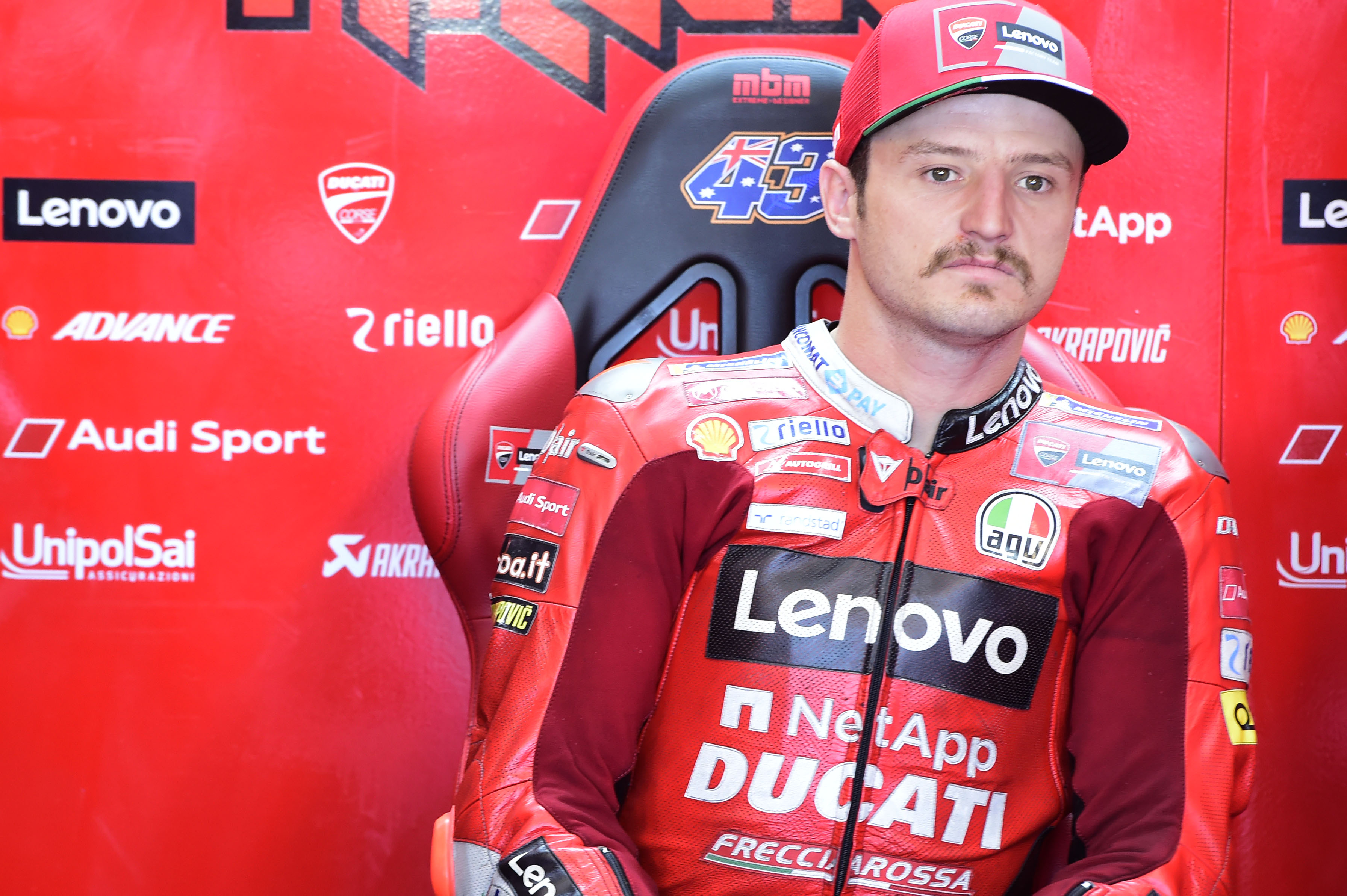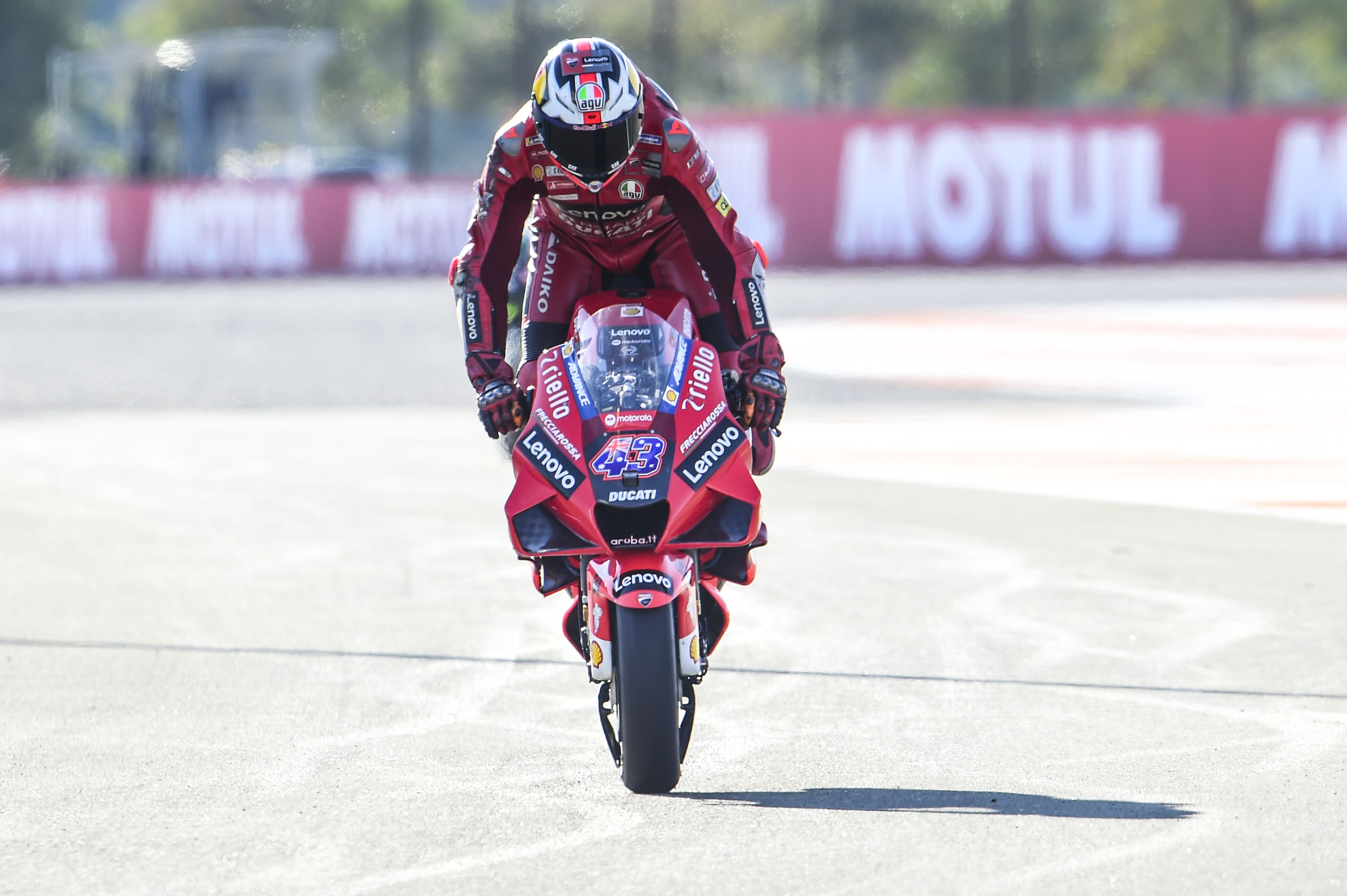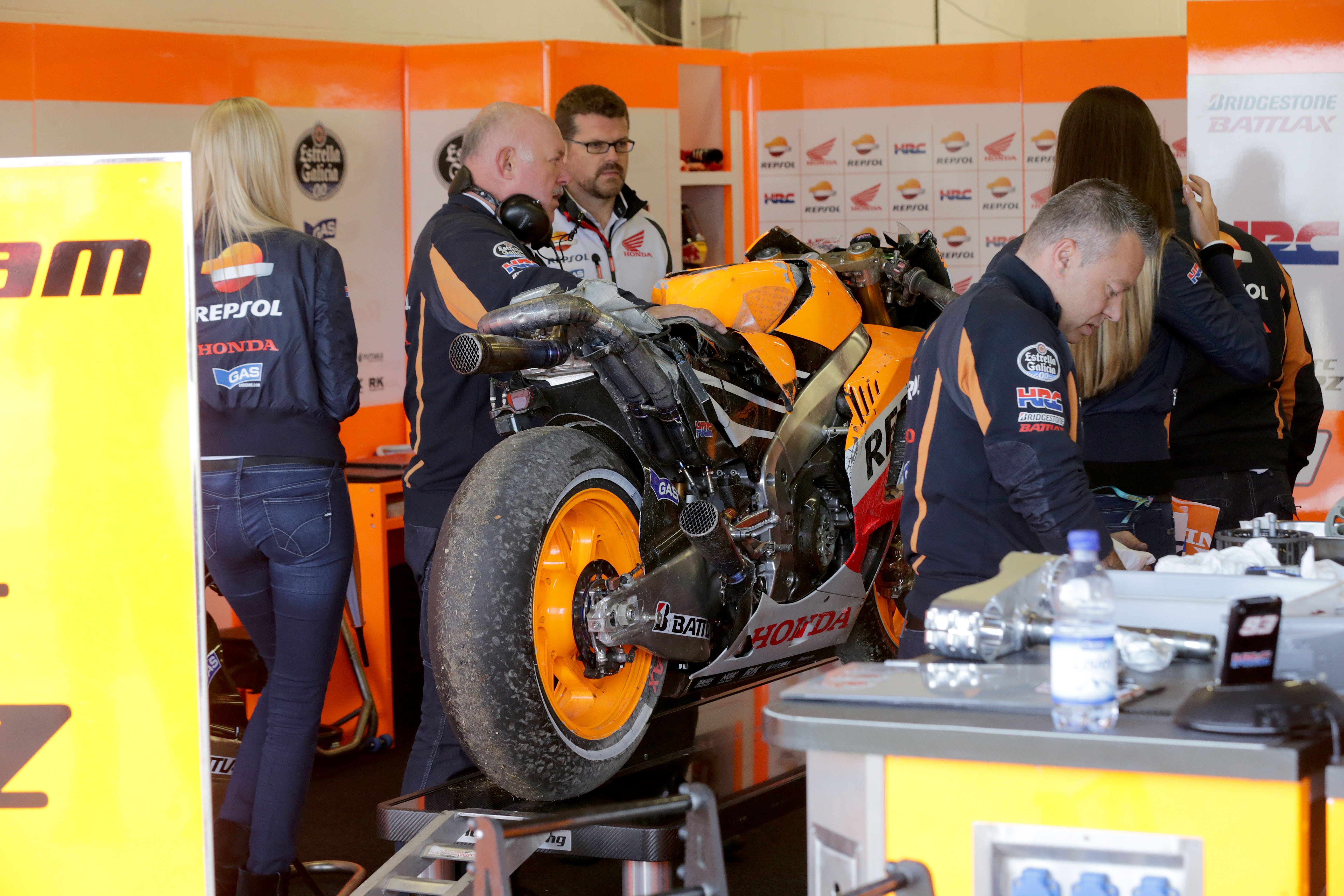Sometimes throwaway comments made by riders can do more to draw attention to reality in MotoGP than any carefully thought-out and properly worded response to a journalist’s question.
And it was exactly one of those lines from factory Ducati rider Jack Miller after qualifying for Sunday’s Valencian Grand Prix that showed just how backwards the FIM stewards have allowed their enforcing of MotoGP’s yellow flag rules to become – and how their attitude towards has created a ticking timebomb.
The current system is straightforward and easy to enforce, even if it does somewhat miss the point of yellow flags.
If a rider goes past a yellow flag on a hot lap, they automatically lose that lap time – but face no further consequences unless they crash.
If a rider falls while passing a yellow flag, they’re penalised, but the penalty tends to be remarkably inconsistent, with the previous four instances respectively a back-of-the-grid start, a six-place grid penalty, a double long lap penalty and most recently a single long lap penalty. That trend suggests that the sanctions are actually becoming less severe rather than more so.
But with no further action taken unless you make the mistake of crashing while ignoring the flag, the reality is that there is simply no incentive to slow down.
Why risk letting your tyres cool down, why disturb your rhythm when you know that you’ve already lost your lap time but aren’t going to be penalised further?

That’s something that Miller implicitly conceded in today’s post-qualifying press conference, when he admitted that he didn’t slow at all when he saw Ducati team-mate Pecco Bagnaia fall in front of him in the closing seconds of qualifying, electing to continue pushing on.
“I actually saw the yellow flags for Pecco,” the Australian admitted, “but OK he was back on the bike.
“I knew that ultimately the lap would be taken away, but that was more for personal glory than anything else. I was going for it.”
AND HE'S DOWN! 😱
That could prove costly for @PeccoBagnaia! 💢#ValenciaGP 🏁 pic.twitter.com/e6EarcneSW
— MotoGP™🏁 (@MotoGP) November 13, 2021
Later in that lap, he even crashed – though once he was outside the yellow flag zone, meaning no penalty.
And while it would be easy to lay the blame on Miller for that attitude, it’s not his fault at all.
It’s the fault of a system that has encouraged such thinking in riders, by allowing them to forget the point of a yellow flag in the first place.
According to the MotoGP rulebook, ‘a single yellow flag waved at the flag marshal post indicates that there is a danger ahead beside the track.
‘Two yellow flags waved together at the flag marshal post indicate that there is a hazard wholly or partly blocking the track.
‘The waving of a single or a double yellow flag does not signify a degree of danger, but only the location of the incident. The riders must slow down and proceed with caution.’
When Miller passed Bagnaia, still standing beside his bike at the side of the track at Turn 2 and with a single flag being waved as a result, he was en route to the fastest opening sector of a fiercely-competitive qualifying session.

How can a rider be ‘slowing down and proceeding with caution’ when they’re also going faster than any other rider has gone in that session so far?
Well, the simple answer is that they can’t be. They’re explicitly ignoring the rules, knowing that the penalty is one that will be applied to them regardless of whether they pass the flag at 105% of their previous fastest lap or at 50%.
Which is why the problem lies with the rules and not the racers. The punishment for ignoring a yellow flag simply can’t stay the way it currently is if MotoGP is really serious about safety, because otherwise there’s very little point in even having caution flags in the first place.
And let’s not forget the real reason that yellow flags exist. Primarily, they’re not there to protect the lives of racers who are admittedly doing a dangerous job. They’re there to save marshals and medics who are the backbone of the sport, volunteers giving up their own time and skills to make sure that racing happens.

There have been close calls in the past when racers have lobbed a bike at marshals when they were working with a previous faller. Perhaps the most famous incident was when only the quick thinking of a Silverstone marshal averted disaster in 2013, when Marc Marquez’s crashing Repsol Honda (pictured above) flew at a group of corner workers trying to extricate Cal Crutchlow’s Tech3 Yamaha from a gravel trap.
The sport got lucky that day. But with riders showing an increasingly callous view (even if they don’t intend it to be that way), as highlighted by Miller’s line today, it’s only a matter of time before it happens again – and there are only so many times you can rely on luck.





